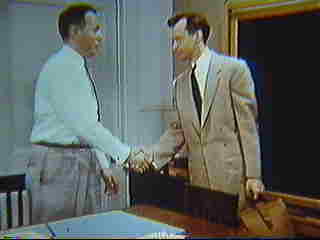 201 201 |
Of all the applications for which Whirlwind has been used, few have done
more to improve man's lot than one involving the design of an optical instrument
to be used in research to aid the human eye. But let's not get ahead of
our story.
"I'm a physicist for the Retina Foundation in the Massachusetts
General Hospital, and have been working for some time on the design of a
very specialized optical instrument. Because of the magnitude of the calculations,
I decided to attempt a solution on an automatic digital computer, and looked
to M. I. T. for help. |
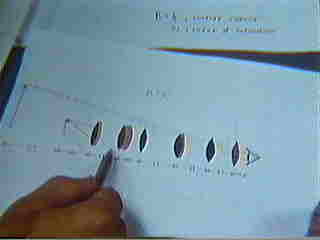 202 202 |
On my first visit to M. I. T.'s digital computer laboratory, I outlined
my problem to the senior mathematician at Whirlwind. Briefly, it is this.
An optical system of my own design is analyzed as a first approximation
to the desired system. Next, the thickness and spacing of the lenses are
varied, the results of the changes calculated, more changes made, and so
on, until all the design requirements are met. |
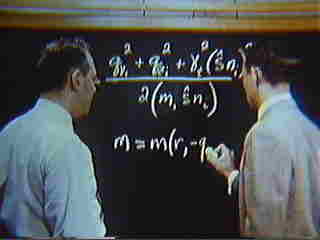 203 203 |
The equations shown on the board determine the paths which incident rays
will follow when passing through the modified system. From these, the performance
of the system can be evaluated. We decided that the problem could be solved
on Whirlwind. |
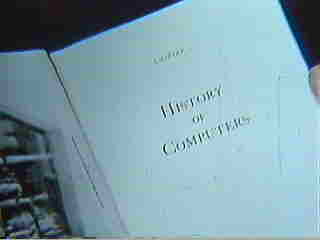 204 204 |
Unlike some computation centers, the Whirlwind facility requires that
potential users do their own programming for the solution of their problems.
I started with some background literature on computers.
One of the suggested texts began with a history of computers. Let me
read a few excerpts from it. |
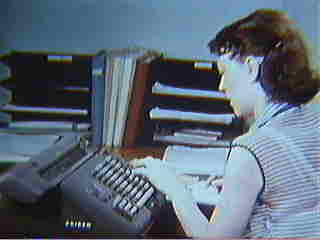 205 205 |
"The digital computer is a far cry from man's earliest attempts at
computation. The abacus is one of the oldest instruments used for arithmetic
operations and in a large part of the world is still being used side by
side with the more recent desk calculator. The necessity for speeding up
lengthy computations by eliminating all manual operations has motivated
the development of high-speed digital computers." |
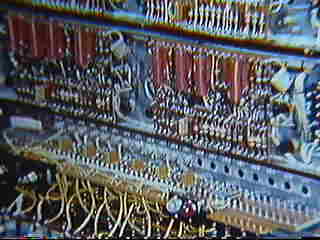 206 206 |
"Over one hundred years ago, Charles Babbage, professor of mathematics
at Cambridge university, made public his plans for the construction of a
large-scale digital computer. Babbage exhibited a profound grasp of the
potentialities of machinery to perform sequences of arithmetic and logical
operations. The development of mechanics and electronics took more than
a century to reach the point where Babbage's vision could become a reality."
Complicated though a modern digital computer may be, its design can be summarized
in a simple block diagram that shows the basic functions of the machine:
input, storage, control, and so forth. Later I saw shown how these function
are performed by Whirlwind. |
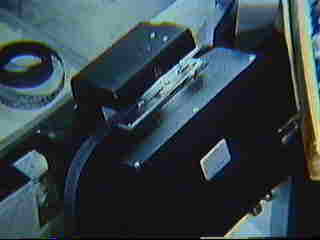 207 207 |
The principal "input device," that is the device for getting information
into the computer, is the photoelectric reader, which converts holes in
punched paper tape into electrical signals. The pattern of holes represents
coded information. |
The MIT Museum has kindly granted permission for me to reproduce these
extracts from the 1953 film on MIT Project Whirlwind,"Making Electrons
Count." The permission is governed by an agreement between Daniel P.
B. Smith and the MIT Museum, and covers publication at this Web site only.
Individuals may view this material at this Web site, http://world.std.com/~dpbsmith/.
Any other use requires permission from the MIT Museum, 265 Massachusetts
Avenue, Cambridge, Massachusetts 02139-4307.
The original film credits contain no date or copyright notice and reads,
in full:
The Digital Computer Laboratory of the Massachusetts Institute of Technology
Presents "Making Electrons Count: Solving a Problem on M.I.T.'s Electronic
Digital Computer 'Whirlwind I.' Sponsored by: Office of Naval Research.
Physicist played by Dean N. Arden. Script by Edwin S. Kopley. Photographed
and Directed by Lloyd G. Sanford.
--Daniel P. B. Smith, http://world.std.com/~dpbsmith/
 201
201 202
202 203
203 204
204 205
205 206
206 207
207